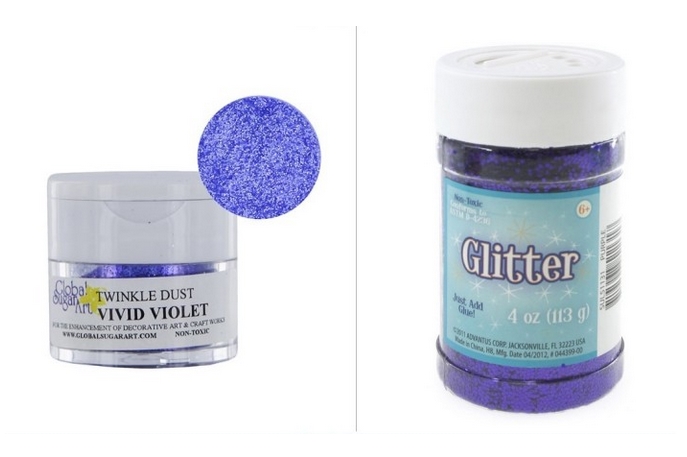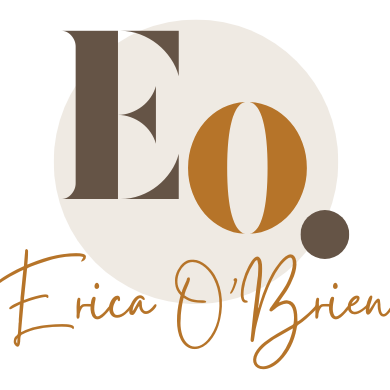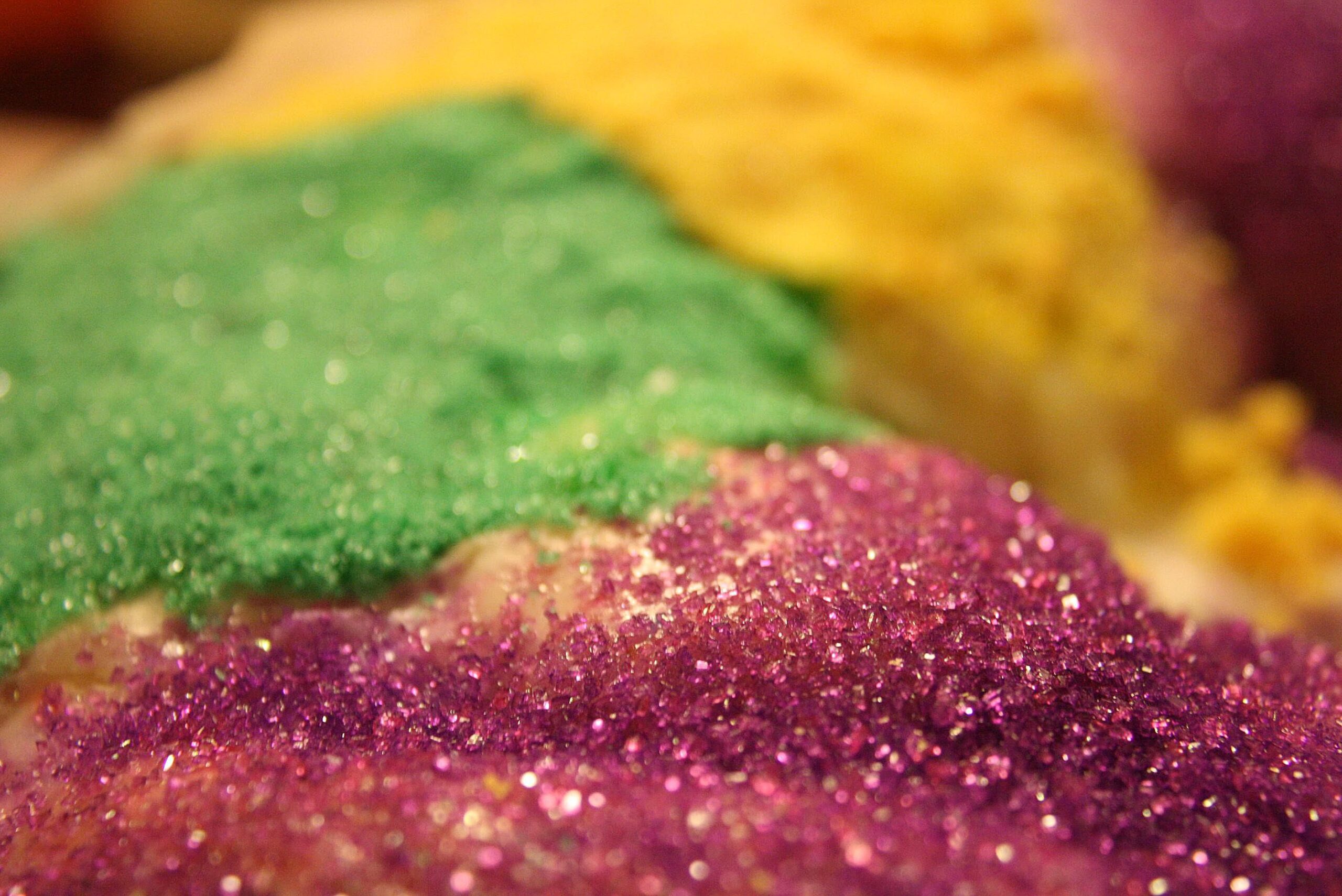A lot of research went into this post, but in the end, I decided to keep things simple and straightforward rather than technical. My research was limited to the laws and guidelines in the U.S., so some of the information might not apply if you’re located outside the States. Also, note that if you’re located within the U.S. and are importing cake decorating products from overseas or Canada, they might not be approved for use by the FDA and that the U.S. does not oversee labeling in other countries.
There is a lot of confusion about the term non-toxic and whether non-toxic products are safe for use on cakes and other confections. For our purposes, products intended for cake design can be easily divided into two categories: edible and non-edible. Let’s define edible as approved for human consumption by the US FDA. Non-edible elements are anything NOT approved for human consumption. When it comes to cake design, these can include, but are not limited to, products labeled “non-toxic”, “for decorative use only”, or “for the enhancement of decorative art”. Essentially, when it comes to professional cake design, either something is edible or it isn’t, and it isn’t up to us to decide. It’s up to the federal government.
The debate is over whether non-toxic products are safe to use on cakes. Many things are non-toxic. Rocks are non-toxic but I wouldn’t want to eat them. Printer ink, crayons, and house paint are non-toxic too. Play-Doh is non-toxic, but we wouldn’t consider it a food. In fact, there are many non-edible, non-toxic components of a cake: the board the cake sits on is non-toxic; wooden dowels are non-toxic as well. Theoretically, non-toxic products can safely come into contact with food.
Technically, non-toxic cake decorating elements such as drageés, glitter, metallic luster dust, and the like, should not be eaten and are for decorative purposes only. In reality, it is often the cake designer’s personal feelings on the matter that dictate whether he or she uses them or not. The spectrum ranges from those who refuse to use any non-edible elements on their cakes to those on the other end of the spectrum who have no problem spattering a cake in glitter and jabbing it all over with floral wire. Still trying to decide where you stand? The first step is to decide whether you’re comfortable with non-toxic decorative elements coming into contact with your cake. (Do you store your food in plastic containers? Then you’re probably okay with it. Are you someone who doesn’t even own a microwave? Then maybe not.) Then decide if you’re okay with people eating them. (I ate a lot of Play-Doh as a kid. Nothing bad happened to me, but I wouldn’t want to feed it to my children, nor would I want to eat is an adult.)

This is not a post strictly about glitter, but since there is so much debate about it (and I liked the alliterative affect for the blog post title), I’ll address it specifically. Wilton makes a somewhat translucent edible glitter called Cake Sparkles that I like. CK Products makes a glitter that is edible. (They also make non-edible glitters so be sure you’re buying the one that says Edible Glitter on the label.) Neither of these glitters, however, is what we traditionally think of as glitter. Glitter intended for cake design, usually called disco dust, twinkle dust, or pixie dust, as far as the FDA is concerned, does not differ at all from the giant 10 oz tub of made-in-China glitter you get in the craft section at Wal-Mart. Look closely at the labels below. The one on the left ($4.19 for 5 grams) is from Global Sugar Art and explicitly says on the label that it is “non-toxic” and “for the enhancement of decorative art and craft works”. The one on the right ($5.90 for 113 grams) also says “non-toxic”. Is there a difference between the two? Are they formulated differently? I honestly don’t know, but as far as the FDA is concerned, there is no difference at all.
As a professional, it is up to you to determine where you stand, establish some guidelines, and discuss your policy with your clients. Some cake artists are comfortable advising their clients that non-edible elements are for decorative purposes only and forging ahead. Others might outright refuse to use them. Those in the middle might, for example, recommend a faux tier for a client that insists on a glitter-covered cake. The question is not whether decorative cake design products such as glitter, metallic luster dusts, and drageés are edible. The question is whether you as the artist are comfortable using them on your cakes.
Enjoy!
For further reading, check out some of these links:
http://www.fda.gov/forindustry/coloradditives/regulatoryprocesshistoricalperspectives/default.htm
http://www.fda.gov/ICECI/ComplianceManuals/CompliancePolicyGuidanceManual/ucm074512.htm
http://www.fda.gov/ICECI/ComplianceManuals/CompliancePolicyGuidanceManual/ucm074435.htm
http://www.fda.gov/ICECI/ComplianceManuals/CompliancePolicyGuidanceManual/ucm074420.htm
Comment on “Edible vs. Non-Toxic: The Great Glitter Debate”
RAE
I appreciate your article, BUT there is NO grey area here. If you produce FOOD, you DO NOT coat it with plastic craft glitter. No cake decorator/artist, should think that it is acceptable to use plastic glitter on something that will be eaten.
Disco dust was NOT “designed for the cake decorating industry”. Disco dust is just craft glitter repackaged for the cake decorating industry. Producers of glitter don’t care who buys it, or how they use it. Repackagers took years to go from just “non toxic” to better advise about it not being considered food. They still fall short of warning that IT SHOULD NOT BE PUT ON FOOD THAT WILL BE EATEN.
There is no excuse for covering cake pops, cookies, real cake tiers, chocolates, or cupcakes with scrapbooking supplies–EVER.
Clients don’t know what this is. They just see shiny bling. If a fast food chain began sprinkling this GARBAGE on french fries, they’d be out of business in 5 minutes. If I start cutting corners and cover cakes in playdoh, melted crayons, silly putty, and construction paper, I’d never have another client.
Use on food of disco dust, twinkle dust, pixie dust, whatever cute name you want to put on it, is WRONG and no conscientious decorator should feel otherwise. Use of it on food is deliberate adulteration of the product and should be treated as such.
ALICIA
I feel non-edible is just that your not suppose to consume. I don’t care for the bling-bling keep it in the decorations not the food. Most won’t tell there customers and I feel that’s so wrong. If you look at these labels it don’t list ingredients, shouldn’t that be a red flag ?
GINA
What I find is making this type of topic really hard is social media photography. As much as I love Pinterest/instagram a lot of clients come to me asking for things that look nice in that “photo” as it was staged to do so…. but the pastry chef in me is screaming no! Half my consultations are spent telling people why they cant have “that”. I truly believe that there are a lot of people out their posting things ( like the above glitter Cake pops) to get the publicity and the “likes” with no actual thought into the consuming of the product or how much influence it has on potential clients.
ROSEMARY
Lately I have seen so many cake pops and sugar cookies being made that are completely covered in either disco dust, “paint” made with a mixture of disco dust and alcohol, dragees or glitter. The entire cake pop,is coated and it seems crazy to me that people eat them with whole. I feel like a cake covered with fondant and the above mentioned shiny things still allows you to avoid eating what isnt edible because the actual cake is protected by thr fondant and you can choose not to eat it. I realize that many of the bakers who use these products without limits are mostly home bakers who don’t exactly do the kind of research you did to write this blog post. It is definitely a good debate and one that deserves way more attention! Great post Erica!
Erica OBrien
Excellent point. Perhaps some of the blame should also be on the cake decorating supply shops that market the non-edible decor?
ROSEMARY
It does start with the supply stores but it is also up to the person selling baked goods to be educated about what they use.
p.s. I am cringing at all of my typos in the above comment. I was typing quickly on my phone 🙂

